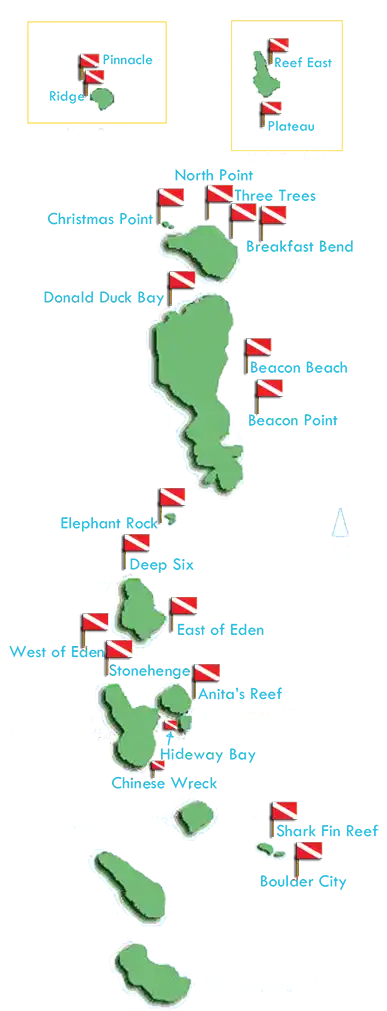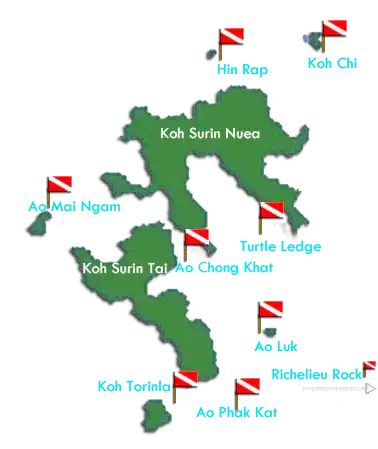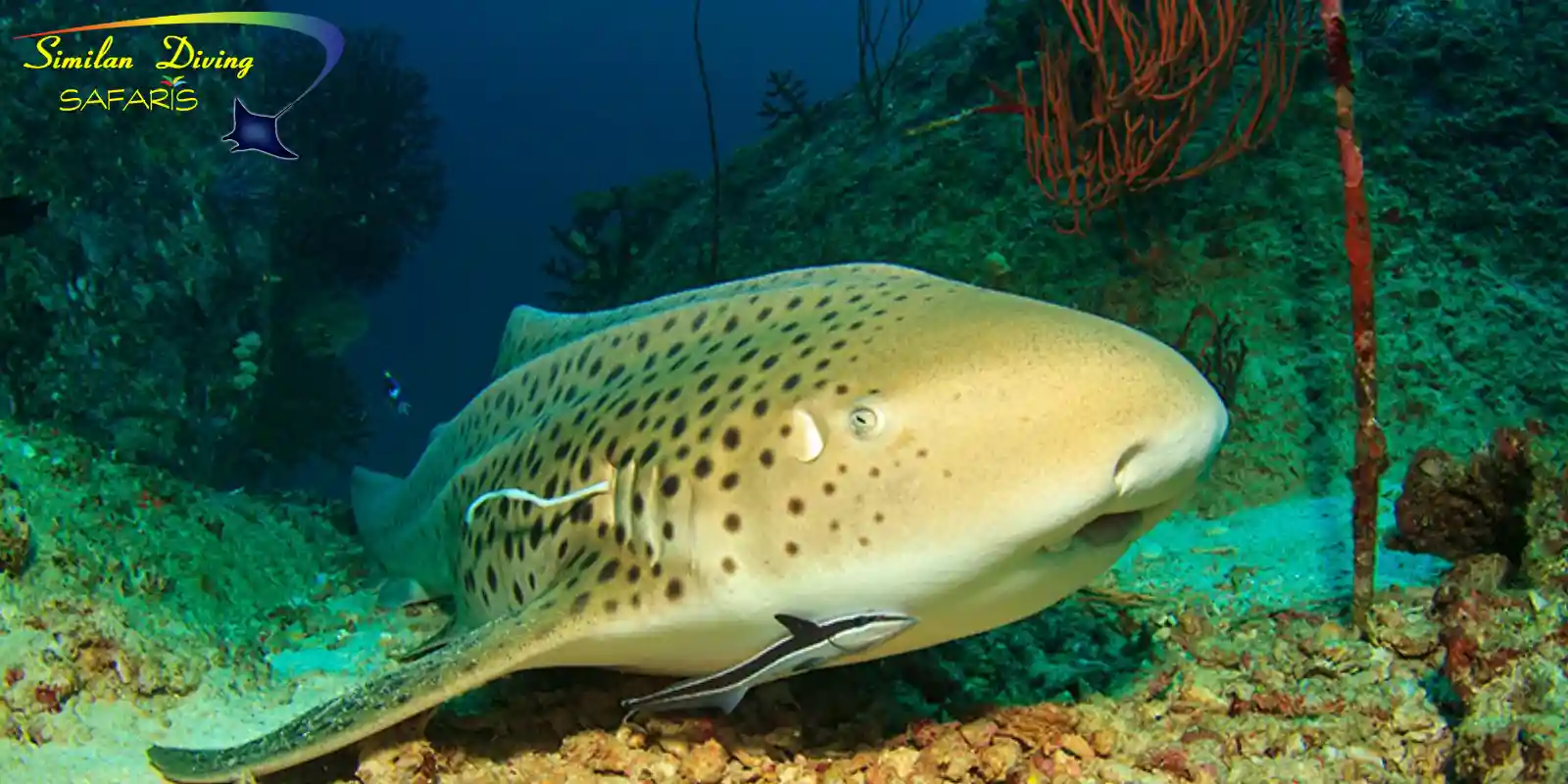Similan National Marine Park dive sites
The Similan National Marine Park Islands is home to some of the best dive sites in Thailand.
Similan Diving Safaris takes great pleasure in safely guiding you to the finest dive sites around the Similan National Marine Park with 22 years of diving experience at these truly beautiful diverse dive sites.
The Similan National Marine Park consists of 11 islands including Koh Bon and Koh Tachai, most of the islands are about 20 to 30 minutes away from each other when traveling on a liveaboard.
On our 3 days/3 nights liveaboard with M/V Dolphin Queen, we do 10 dives, including 1 night dive and 1 sunset dive.
For our 5 days/5 nights liveaboard there are 18 dives including 2 night dives and 2 sunset dives.
The diving is multilevel throughout the day.
You get to dive all the major dive sites in the Similan Marine National Park Islands. Here are just some of the dive sites you will dive at.:
Hideaway (10m to 35m) island #5 and #6
This dive site is usually our check dive location.
The dive site is a sloping reef that meets a flat white sandy bottom, perfect for our dive group to take things slow and for our divers to be able to get used to the underwater environment and check their dive gears.
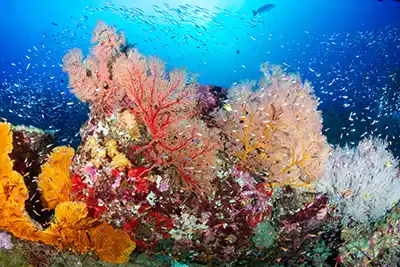
Boulder City (12m to 30m) island #3
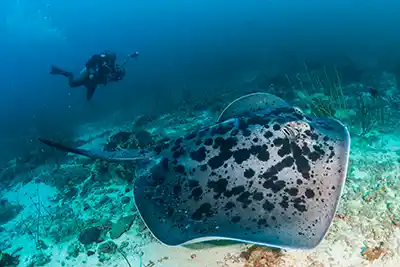
Boulder City is located approximately 250m off the east tip of Similan Island 3. Although diving around Island 3 is not allowed, Boulder City is an exception. The dive site starts at 12m where you’ll see plateaus filled with hard corals and coral bommies. As the plateau slopes down into the deeper water, all the boulders are decorated with an abundance of giant sea fans and green cup corals. The Napoleon Wrasse is commonly seen here in Boulder City, as well as a big school of barracudas, sea turtles, and sharks.
Shark Fin Reef (5m-35m) island #3
The name Shark Fin Reef comes from the formation of the boulders that are above the surface of this dive site. Looking at the boulders from a certain angle, you can see that they look like shark fins. This dive site is well known for the structures of massive boulders that start from the surface and slope all the way down to the deep sandy bottom. All along the boulders, there are green cup corals growing in large amounts. There are also many anemone gardens throughout the dive site on the sandy bottom; it is also a place where sea turtles like to rest. Shark Fin Reef is a dive site where we’ve had rare sightings of tiger sharks passing by. Other sharks and rays can be seen on this dive site as well.
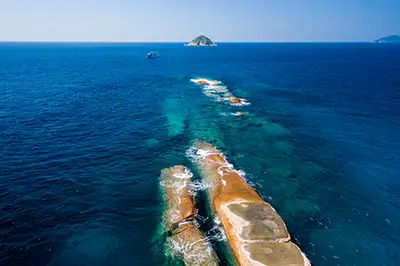
West of Eden (10m to 30m) island #7
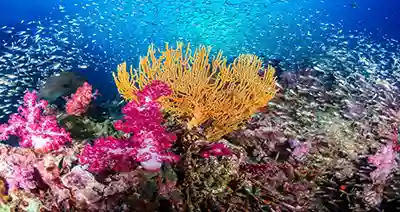
West of Eden is without a doubt one of our most preferred dive sites to explore. On the southwest part, it has a very healthy shallow coral reef that extends towards the north part of the dive site, where the hard coral reef meets with giant granite boulders. On top of the boulders are hard coral gardens that join with all the beautiful sea fans along the side.
Deep Six (15m to 40m) island #7
This dive site is all about the amazing formation of giant granite boulders that are stacked on top of each other, creating swim-throughs all around the dive site.
The boulders slope down to the deep white sandy bottom, where white-tip reef sharks can be spotted resting during the daytime.
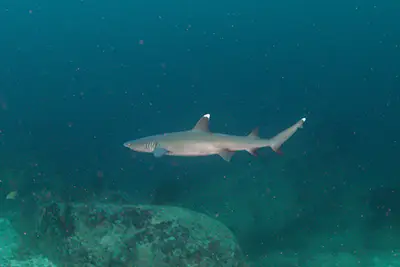
North Point (10m to 40m) island #9
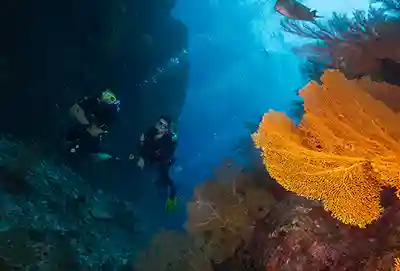
Located at the northernmost point of Island 9 is this fantastic dive site. North Point consists of a sloping reef and granite boulder formation leading into the deeper water.
Northwest of the main dive site is a pinnacle, with breathtaking giant sea fans covering the boulders at all sides. Different species of sharks and rays are commonly spotted at North Point Pinnacle.
Hin pusa is Elephant Rock (15m to 40m),
between island #7 and #8
This dive site is a mass of giant granite boulders and has mazes of swim-throughs that you can explore. Giant trevallies are always circling above. It is also a well-known location to see white-tip & black-tip reef sharks. You can occasionally spot nurse sharks relaxing under the boulders as well. Ribbon eels are also known to be the local residents of Elephant Head Rock.
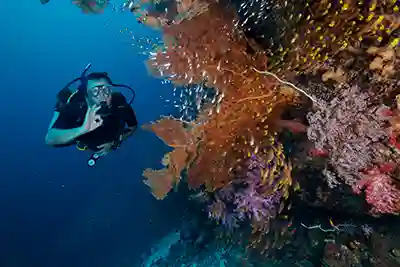
Koh Bon
Koh Bon Island is made up of limestone, allowing soft corals to grow in abundance below the surface. At Koh Bon, there are 3 dive sites.
Firstly, Koh Bon West Ridge is the most popular spot to dive, decorated with soft coral gardens and a limestone wall covered in hard corals where sightings of sea turtles and lobsters are common. The ride is a famous viewpoint for spotting giant oceanic manta rays that pass by the cleaning station at the North Ridge.
Koh Bon Bay is a fantastic dive spot for sunset or night dives, as its maximum depth is 20 meters and it is also shielded from currents and wind. The bay is filled with many species of hard coral, providing a home and shelter for all the small fish species. Black-tip reef sharks can be seen hunting around the bay during sunset and night dives as well.
Koh Bon Pinnacle is located approximately 50 meters out and away from the main ridge. This pinnacle comes with many challenges, but it is definitely a breathtaking dive site. The pinnacle starts at a depth of 18 meters and is filled with colourful soft corals everywhere, and is a great place to spot bigger species of marine life. Mantas, whale sharks, leopard sharks, shovelnose rays, and whip rays have been seen around the pinnacle. Due to the challenge this dive site brings, we only choose to dive here when conditions allow and only with Nitrox divers
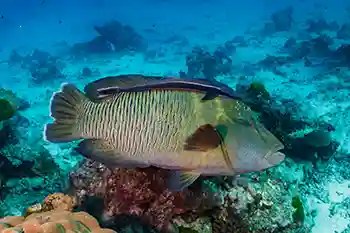
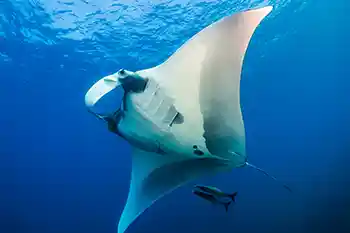
Koh Tachai
Koh Tachai is without a doubt one of our favourite sites to show our guests. Koh Tachai Plateau starts at a depth of 12 meters.
The plateau is formed by many giant granite boulders layering on top of each other and breaking off all around the deeper edge of the dive site. This site is located approximately 200 m from the southeast tip of Koh Tachai. It is a place absolutely filled with life, hard corals, gardens of soft corals, giant sea fans, and massive coral bommies. Life has formed itself all around the plateau, making it one of the most densely populated dive sites we choose to explore.
Many schools of fish use this area to hunt for the smaller fish that take shelter around the plateau. Big schools of batfish are locals to Koh Tachai Plateau, along with schools of longnose emperors, rainbow runners, trevally, and barracudas. Octopus, sea snakes, and nudibranchs are also common sightings here.
Koh Tachai Reef is an amazing alternative dive. The reef runs all around the island and is covered with hard coral gardens. Black-tip reef sharks are almost a guarantee when snorkeling or diving at the reef. A school of bluefin trevally has been seen hunting at the reef many times before. Lobsters are commonly spotted resting under the hard corals. Overall, Koh Tachai Reef is a great alternative, as it is a nice and relaxing drift dive where you’ll have the chance to see a very healthy underwater ecosystem and spot some cool marine life.
Note: PADI Open Water diver, max. 18m | Advanced Open Water diver, max. 30m
Recommodation : PADI Open Water divers should take the Advanced Open Water course or the Adventure Deep dive aboard our liveaboards to be certified to dive beyond 18m.
Schedule & Bookings Short term DAN diving insuranceThe Surin National Marine Park Islands dive sites
The Surin National Marine Park is one of the best destinations for shallow diving and snorkeling. Surin Island is located approximately 67 km north of the Similan Islands.
The Surin National Marine Park consists of 2 main islands (Surin North & Surin South), 3 small islets (Koh Chi, Pachumba & Torinla) and a rock formation called Hin Kong which translates to “A pile of rocks”. Surin south is home to the Moken Tribe (Sea gypsies) who all live together on the island in their handmade wooden huts.
The world famous Richelieu Rock is also a part of the Surin National Marine Park.
Richelieu Rock (0 to 40m).
A limestone pinnacle filled with many colorful soft corals covers all of the dive sites, providing a home and shelter for small fish. Richelieu Rock is well known for all the big schools of fish that have adapted and learned to hunt together around the dive site.
This dive site is very rich with life, from the smallest nudibranch to a 10+-meter whale shark that occasionally passes by.
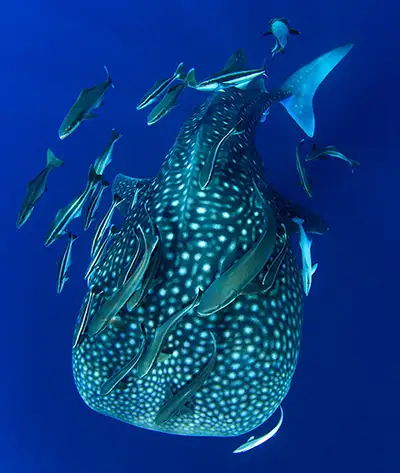
Ao Phak Kat (10m to 20m)
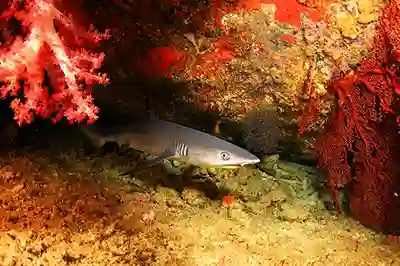
A very healthy coral reef surrounds the whole bay on Surin South. Ao Pakkad translates to “Cabbage Bay,” and the name comes from the impressive amount of cabbage coral that grows all over the coral reef. Juvenile batfish are commonly spotted here, usually taking shelter inside the staghorn coral. This dive site also provides a home for many more juvenile fish. Black-tip reef sharks are usually seen passing by in the shallow water of this bay, and rays can be spotted laying on the sandy bottom
Hin Kong (10m to 30m)
Hin Kong is a formation of giant granite boulders stacking on top of each other from above the surface and sloping down to the sandy bottom. The dive site is home to a large amount of red-tooth triggerfish and whip corals that spread out all over the ocean floor. Lobsters are common here as well. There have also been recent sightings of tiger sharks cruising around in Hin Kong.
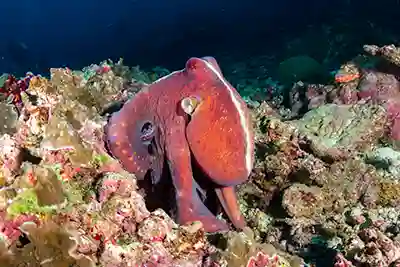
Torinla Pinnacle (15m to 35m)
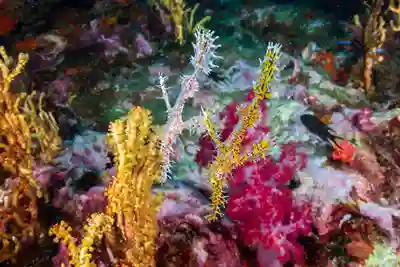
This pinnacle of granite boulders is located on the west side of Koh Torinla. This dive site is well known for the boulder formations and all the big brown marbled groupers that live here. Shovelnose rays have been spotted many times here, as has a family of bumped-head parrot fish. You can also find whiprays laying on the rocky bottom, as well as rabbit nudibranchs and pygmy pipe horses.
Note: PADI Open Water diver, max. 18m | Advanced Open Water diver, max. 30m.
Recommodation: PADI Open Water divers should take the Advanced Open Water course or the Adventure Deep dive aboard our liveaboards to be certified to dive beyond 18m.
